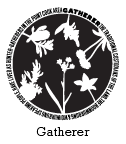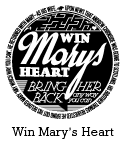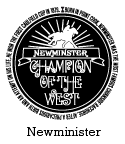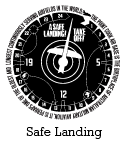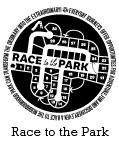Black Wallaby | Wallabia bicolor
The Black Wallaby, also known as the Swamp Wallaby or Black-tailed Wallaby, is dark grey or black on top with flecks of grey, yellow and orange and a yellowish-orange underbelly. Found in a range of habitats, including along the Werribee River, it is nocturnal and mainly solitary, although wallabies gather at feeding grounds during the night. Local Aboriginal men speared wallabies for their meat and used other parts for tools, nets, bags and clothing.
Common Brushtail Possum | Trichosurus vulpecula
Found in eucalypt and sheoak woodlands, the Common Brushtail Possum lives in tree hollows and is a nocturnal, solitary and highly territorial marsupial.
Local Indigenous people caught and killed possums, removing their pelts (the skins and the fur), before cooking them in earth ovens. Their pelts were used to make possum skin cloaks worn by the Boonwurrung and Woiwurrung-speaking people, providing great warmth during winter.
The craft of making a possum skin cloak involves carefully removing the pelt, cutting the pelt into squares and stretching it onto sheets of bark using small wooden pegs. Using a mussel shell the inside of the pelt is scraped clean. When it is dry, patterns are cut into it. The inside is decorated with clan motifs using red ochre and charcoal, mixed with fat to provide waterproofing. Holes along the edges of the pelts are created using a long kangaroo tooth. They are sewn together using kangaroo sinews (muscle fibres).
Short-finned eel | Anguilla australis
The short-finned eel has a long snake-like body and is golden to olive-green. It is nocturnal and found along the Werribee River.
Eels were a significant food source for local Aboriginal people. Short-finned eels were caught in great abundance at the end of summer when their availability is plentiful. They were caught in a variety of ways: speared, captured by hand, with traps or with hand nets. The eels were cooked and eaten, or traded with other clans.
Fresh eel skins had medicinal properties that could alleviate joint pain when they were wrapped around the troubled area.
Striped Legless Lizard | Delma impar
Legless lizards are unique to Australia and Papua New Guinea. The Striped Legless Lizard is a thin snake-like lizard with a broad olive-brown stripe along its vertebrae. Legless lizards can be distinguished from young snakes as they do not have stripes along the entire length of their body.
Predominantly living in native grasslands and sheltering beneath rocks, they are now endangered in Victoria because of the destruction of their natural habitat.
Local Aboriginal men hunted lizards. If lizards crossed the path of women while they were gathering plant foods, they were poked with their digging sticks and collected into their baskets.
Eastern Barred Bandicoot | Perameles gunnii
The Eastern Barred Bandicoot is a small grey-brown marsupial with a long, pointed nose and pale stripes on its hindquarters. The claws on its front feet are used for digging and its back feet are similar to a kangaroo.
Indigenous men used to hunt bandicoots using various spear tools. It was the most common bandicoot in the area but it is now endangered in Victoria. Its traditional habitat has been used for farming and introduced predators have diminished its numbers.
Shellfish
Shellfish were an important food source for local Aboriginal people.
Shellfish were gathered by women and children from rock platforms, sandy shores of ocean beaches, river inlets, estuaries and bays by either diving or using digging sticks. The variety of shellfish species included mussels, pippis, cockles and periwinkles.
Shellfish were cooked in open fires, eaten, and the shells were discarded near the camp. Over time this practice led to large piles of shells, which are called middens. These sites mark the places Aboriginal people camped and usually occur close to the coast.
Mussel shells were also traded and used as tools, either to make fish hooks or to scrape animal hides and wood.
Further Reading
Aboriginal Affairs Victoria (2008). Aboriginal Coastal Shell Middens.
Cogger, H. (2000). Reptiles and Amphibians of Australia. Reed New Holland, Sydney, NSW.
Nash, D., (2004). Aboriginal Plant Use in South-eastern Australia, Australian National Botanic Gardens, Acton, ACT.
Presland, G., (2008). The Place for a Village, Musuem Victoria, Melbourne, VIC.
Presland, G., (1994). Aboriginal Melbourne, Penguin Books, Ringwood, VIC.
Wilson, S. & G. Swan, (2003). A Complete Guide to Reptiles of Australia. Reed New Holland, Sydney, NSW.
Zola, N. & B. Gott, (1992). Koorie Plants Koorie People, Koorie Heritage Trust, Melbourne, VIC.

